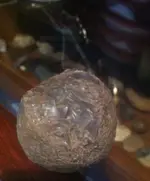hammerstone99
Jr. Member
I thought these were kind of different don't think i've seen any posted on here. Found one a few years ago and didn't think much of it then I found another one this year. I don't know what else to call them. They both show impact use on one side and a cutting chopping edge on the other, kind of like a mini hatchet. What do you think? any one got any??



and the other






and the other



Upvote
0






